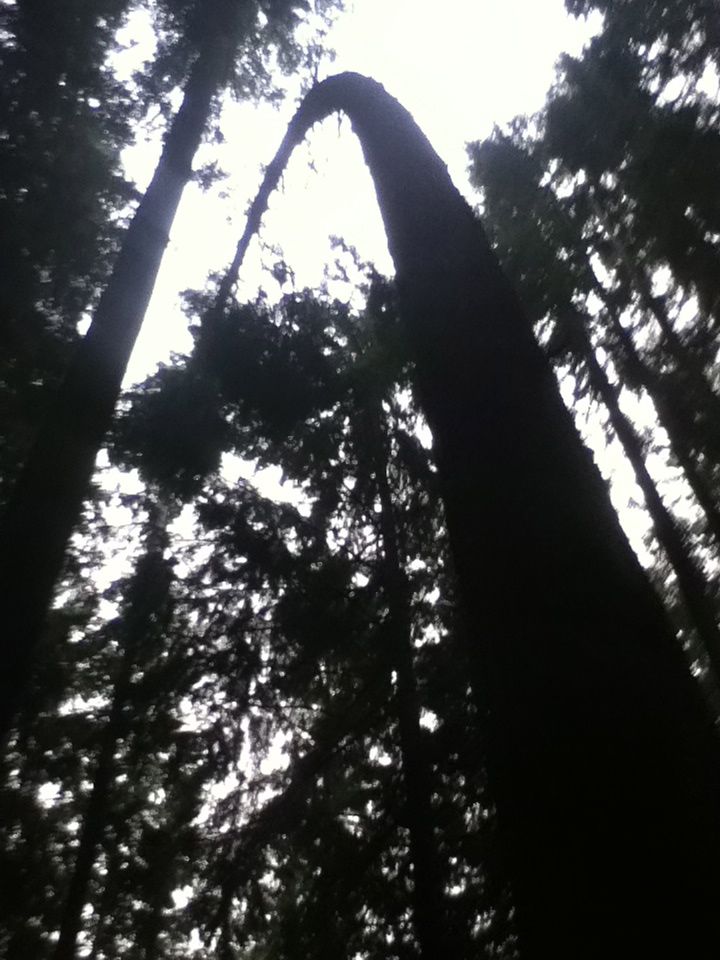Here are some pictures of some different type of hazard tree's one might find on the trail.
Each one requires a different approach, and all are very very dangerous to work around.
This Cedar is one of the most dangerous type. When it blows in half there are all kinds of dangers in taking this down. The safe way is to throw a rope in and make your cuts and pull it over from a distance.
This poor Hemlock is ready to come down at any moment with no notice to anyone that might be in its path. Take a look at all the fungus on this tree. Also Look at the top and how bent it is. Even a small push could send the top down on you.
When cutting large high up wood like this its always good to work
on the uphill of the tree and keep aware as the giant round could come down and crush you bad.
In this case the only safe way was to make the first cut at 90% then sit on the tree to make the final cut. When the round drops your already clear of the danger.
Having a hand saw works great because you can hear the first cracks and be on the alert. With a chainsaw its not always easy to hear the little sounds.









